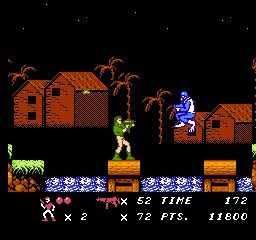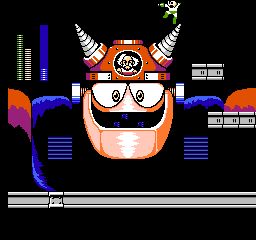I was always interested in Little Nemo when I was young. The comic book advertisements made it seem like the coolest game in the world to my nine year old self. But it somehow managed to elude me, much like Lunar: Eternal Blue. It wasn’t until the end of the 16-bit generation that I would find it second hand at Funcoland. But even after all those years of anticipation it was still just as awesome as I thought. Little Nemo: the Dream Master is Capcom at their best and an NES classic.
As far as licenses go Little Nemo is one of the most obscure. Little Nemo began life as a comic strip in 1905. The comic strip served as the inspiration for the animated feature Little Nemo: Adventures in Slumberland which released in 1989. Although the movie featured gorgeous animation from TMS it was a commercial failure. But that didn’t stop it from Capcom from creating two games for the NES and arcade. While difficult the NES game is better and one of the best platformers for the system.
Nemo is not terribly effective on his own. His only means of protection are his endless supply of candy. Candy can stun enemies but won’t kill them unfortunately. Candy can entice certain animals to help you however. Throughout the game are eight animals who will let join your side temporarily when fed candy. It’s a bit creepy too as Nemo wears some of the animals like a suit but I digress. Each comes with special abilities necessary during the game. Bees can fly a short distance, frogs jump the highest and swim the fastest while the gorilla has the longest life bar and can climb walls. The animal helper system is probably the coolest aspect of Little Nemo and they’ve done a good job making each distinct.
Each level has a simple goal; collect the requisite number of keys to open the door to the exit. Each level, or “dream”, needs a different number of keys to progress and they are well hidden. Every level is massive compared to Little Nemo’s contemporaries and full of hidden items and rooms. In most cases you’ll need to use multiple helpers in concert to find all of the keys.
Overall the level design is great although it does have some issues. The most prominent being the keys themselves. You aren’t told how many are needed in each level which flat out sucks. It is infuriating to reach the gate only to find you missed some. If you’ve missed a key it is near impossible to backtrack in some cases and you’ll have to die to try again. Capcom have outdone themselves hiding some of these keys, making me question who the game is for. I like a good treasure hunt but this borders on the ridiculous. Seemingly bottomless pits are actually gates to areas where keys are hidden but there is no way to distinguish the two. This type of trial and error makes the game frustrating but I’ll admit it still remains fun.
Part of why Little Nemo remains fun in spite of its flaws is the variety in level design. The first and second levels, the Mushroom Forest and Flower garden, are the most traditional. It switches things up from there as the Toyhouse is an auto scrolling train ride with more keys than necessary. Compared to the rest of the game Nemo’s house is nonlinear and larger than every other stage. The Cloud Ruins are a grueling battle to reach the end but the game at least throws you a bone. All the keys are at the exit, you just need to get there. Nightmare World changes things up by giving Nemo a magic wand to fight enemies, making it more combat oriented.
To appreciate Little Nemo’s good points will require major skill however. Little Nemo is an incredibly difficult game, more so than most of Capcom’s titles. Most of that comes down to Nemo himself. Because you are useless without an animal it is easy to die. Enemies respawn infinitely which also makes things worse. Once Nemo has the Nightmare Rod toward the end and can attack enemies directly you will wish it were there from the start. Checkpoints aren’t evenly spaced out, leading to replaying long sections after death. There are unlimited continues but I almost wish there were passwords to save progress.
Capcom spared no expense in bringing Slumberland to life. The dream setting allows their artists to create many imaginative landscapes full of intricate detail. Despite the game’s darker tone it is still more vibrant than most titles on the system. While it may tread familiar gaming ground at times it does so in an original fashion. It is only natural that the animation is great; this is Capcom after all. Most of Capcom’s titles used the same engine but Little Nemo hides it pretty well if so. A-class all around in my book.
In Closing
Little Nemo: the Dream Master is one of the best action platformers for the NES and a true hidden gem in its library. Excellent level design, tight gameplay and high production values combine to create one of the best games few have heard of. Don’t let that stop you from pick up this lost classic.










2 thoughts on “Little Nemo: the Dream Master”